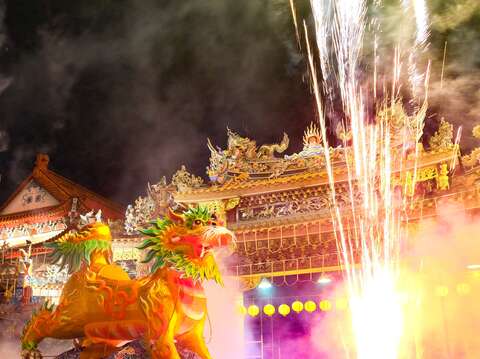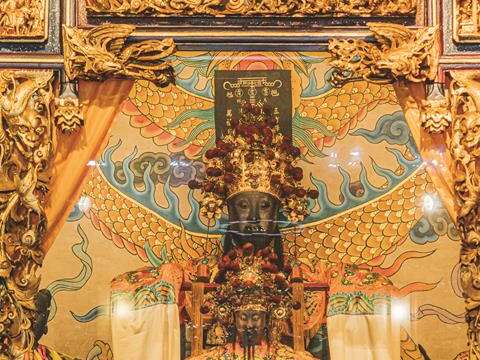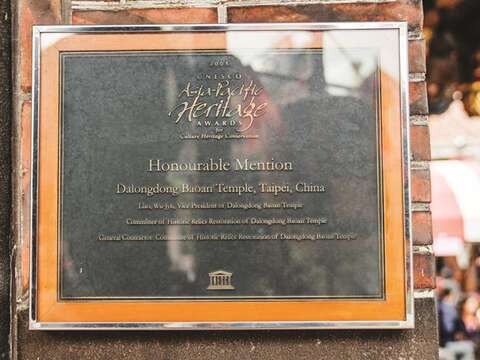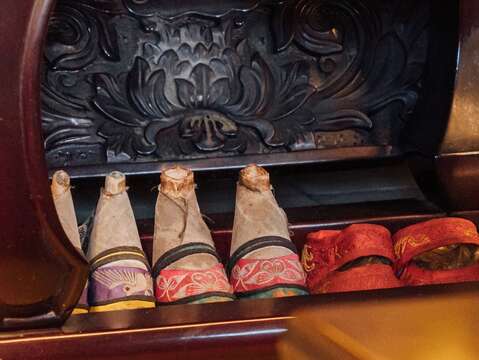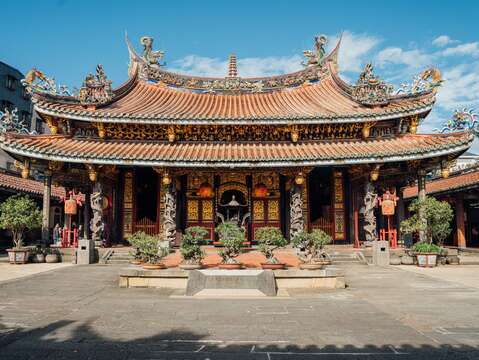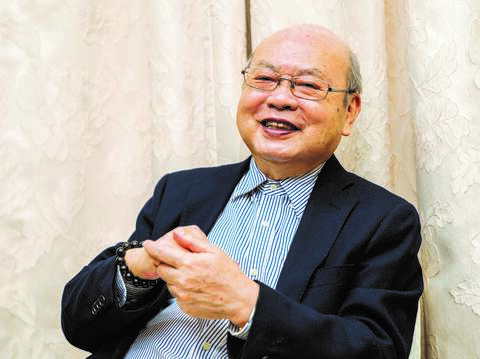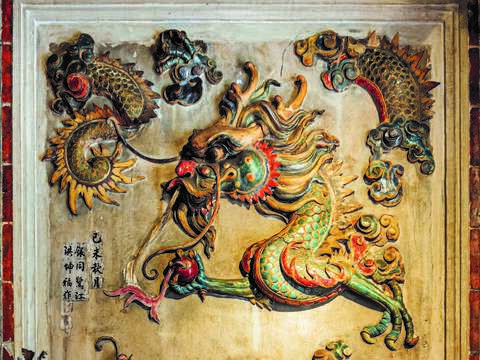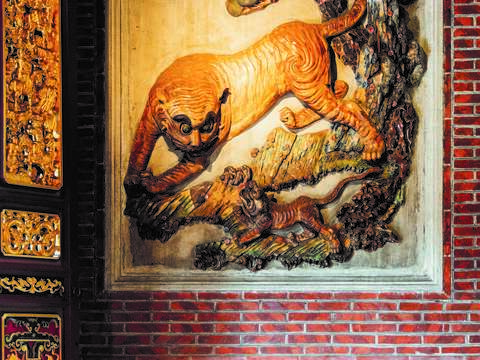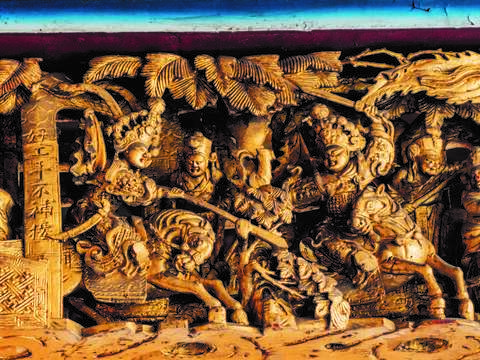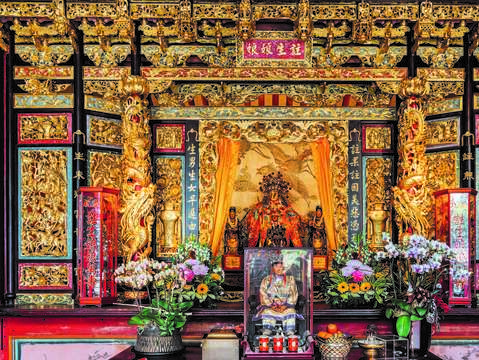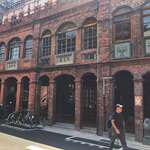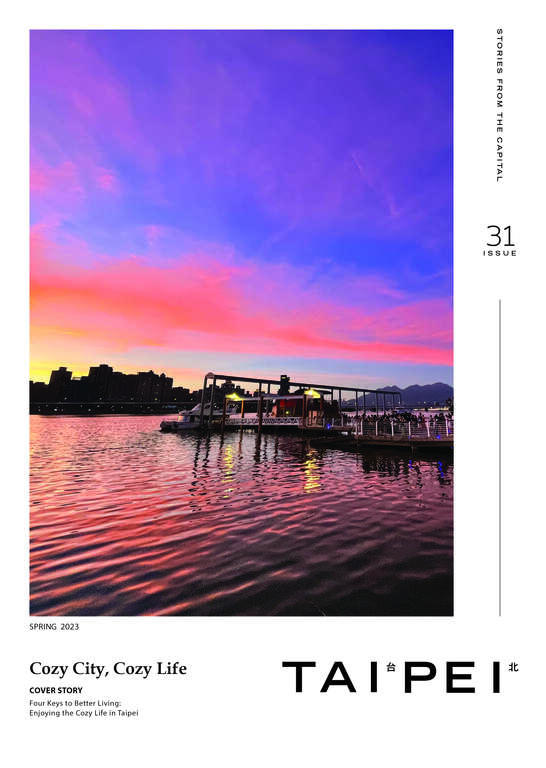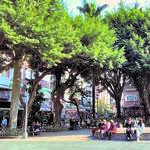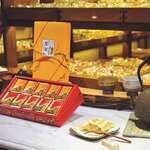Post date:2023-03-14
1825
TAIPEI #31 (2023 Spring)
Taipei’s Historic Gems:
Dalongdong Baoan Temple and the Baosheng Cultural Festival
Author Jenna Lynn Cody
Photographer Samil Kuo, Dalongdong Baoan Temple
Taipei’s historic temples dot the city with vibrant color, serving as both cultural hubs and historic sites. Among these places of worship, one stands above the rest: Dalongdong Baoan Temple (大龍峒保安宮). With over two centuries of history, Baoan Temple is dedicated to Baosheng Dadi (保生大帝), also known as Emperor Baosheng, the venerated god of health and medicine, and is covered with ornate woodcarvings by masters from generations past, Koji pottery, couplet-inscribed columns and large murals. To better understand the story and splendor of this cultural gem, we sat down with temple president Liao Wu-jyh (廖武治), as well as Chang Ching-wei (張靖委), a researcher of cultural property who matriculated from the Graduate Institute of Architecture and Cultural Heritage at the Taipei National University of the Arts (國立台北藝術大學).
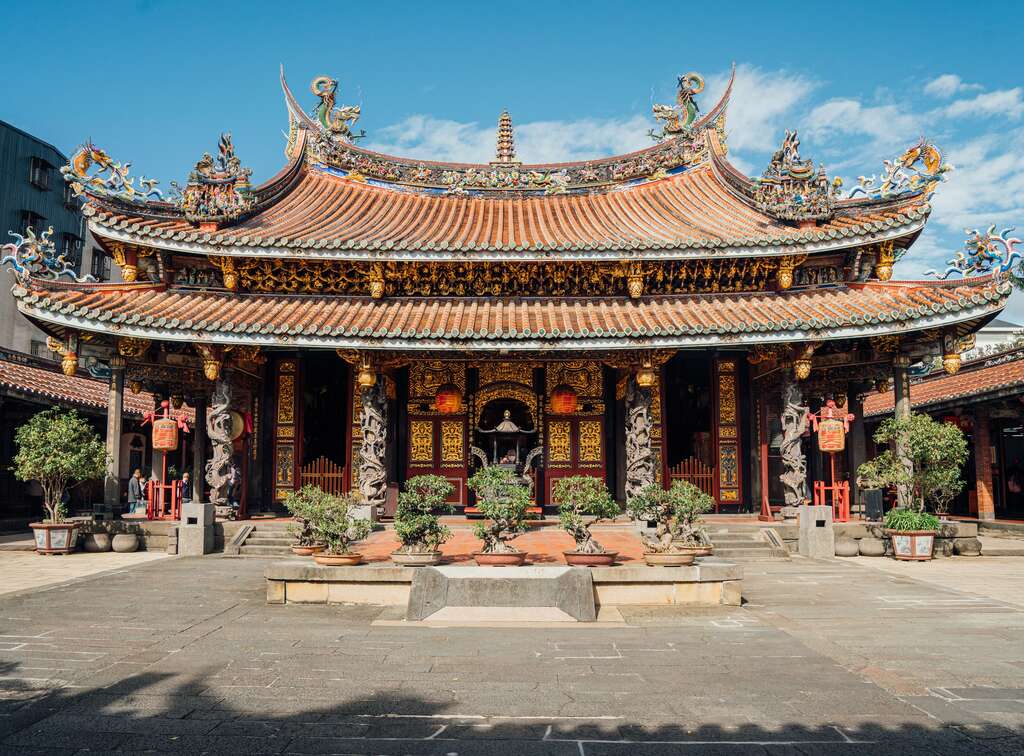 ▲Baoan Temple, where people worship Baosheng Dadi, has stood in Dalongdong for over two centuries.
▲Baoan Temple, where people worship Baosheng Dadi, has stood in Dalongdong for over two centuries.
The History of Dalongdong Baoan Temple
1742 marks the first known appearance of Baoan Temple in the Dalongdong neighborhood, founded by immigrants from Tongan (同安) in China’s Fujian Province. The site of the original temple is unknown.
Baoan Temple President Liao Wu-jyh recounts the story of the Baosheng Dadi idols in the principal shrine. “The first two were carved in China, and a race was held to see which idol would reach Dalongdong first,” he says. “A large idol [with distinctive glass eyes] was sent south and transported overland from Budai (布袋) in Chiayi County (嘉義縣), and a smaller one was brought by sea via Tamsui (淡水). The smaller idol arrived first, and the one from Chiayi became the secondary idol.”
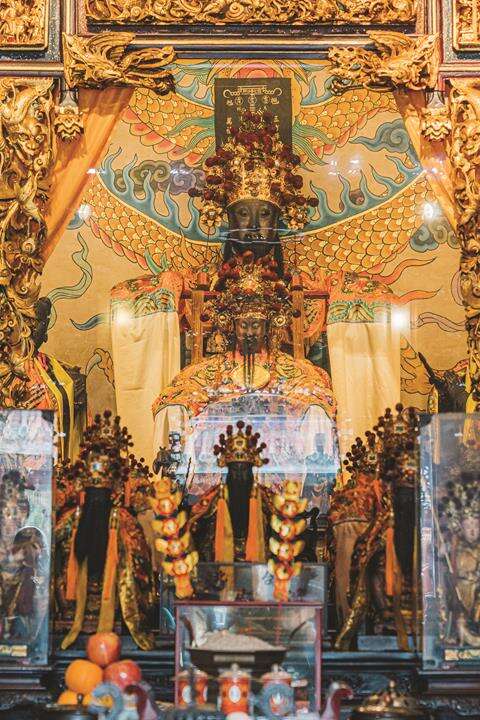 ▲The Baosheng Dadi idols of the grand master, second master and third master in the principal shrine.
▲The Baosheng Dadi idols of the grand master, second master and third master in the principal shrine.
In 1805, a much larger Baosheng Dadi idol was carved in Taiwan and worshipped alongside the original two, around the time construction of the current Baoan Temple commenced. This structure spans almost 9,917 square meters.
“The location was decided by walking around with the idol until it indicated where it wanted its temple to be built,” says Liao.
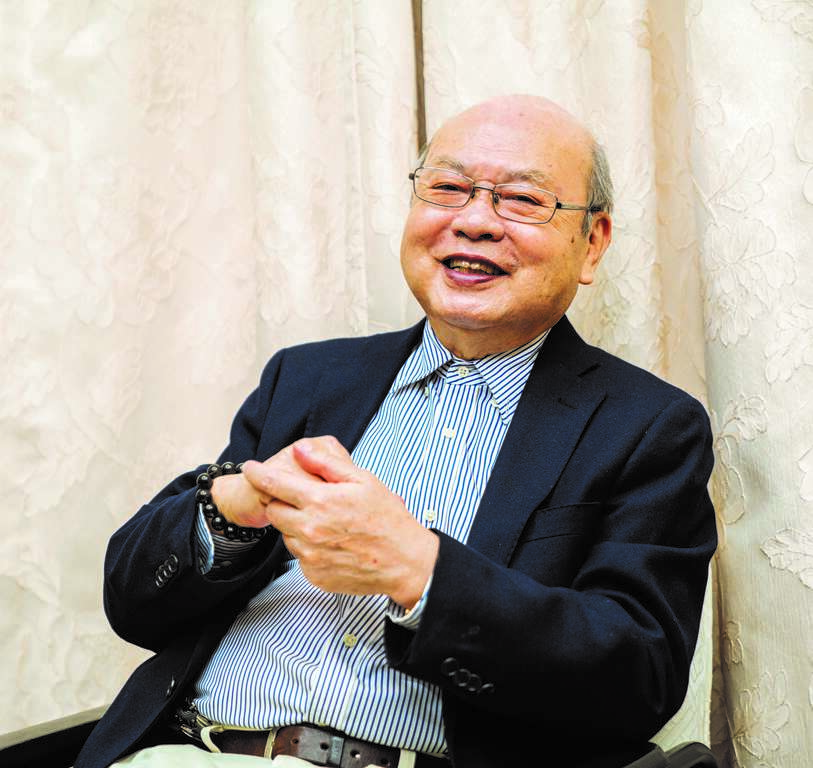 ▲Temple President Liao Wu-jyh has hosted various events at Baoan Temple in recent years, and even presides over ceremonies personally.
▲Temple President Liao Wu-jyh has hosted various events at Baoan Temple in recent years, and even presides over ceremonies personally.
Many difficulties befell Baoan Temple in the 130 years that followed. In 1859, the temple was almost attacked from the north, a conflict attributed to warring factions with grudges that stretched back to Fujian Province, their place of origin. This was warded off by the actions of local people, who scared off the attackers with wooden poles. The structure was damaged by a munition’s explosion in 1895 during the Japanese occupation of Taipei, and was later turned into a school. In 1949, families who fled to Taiwan from China with the retreating Nationalist Army took shelter in the temple. Renovations were conducted in 1967 and again in 1995.
Gods Worshipped at Baoan Temple
Born in 979 A.D., Baosheng Dadi began his adult life as an imperial official. Soon, news spread of the medical miracles he was said to perform. In one story, he met a dragon posing as a mountain-dwelling woodcutter, suffering from an eye disease. Upon recognizing Baosheng Dadi, the woodcutter turned back into a dragon and begged for eye drops, which the god administered.
As time went on, other Confucian, Buddhist and Daoist gods were added alongside Baosheng Dadi. These include Confucius, Guanyin (觀音, the goddess of mercy and compassion), Zhusheng Niangniang (註生娘娘, the principal goddess of pregnancy and childbirth), Tudi Gong (土地公, the god of land), Shennong Dadi (神農大帝, the god of agriculture) and Matsu (媽祖, goddess of the sea). The highest god of the Daoist pantheon as well as the lord of heaven and earth, Yuhuang Dadi (玉皇大帝), or the Jade Emperor, is worshipped both at the incense brazier at the front of the temple and again on the top floor of the rear-most shrine.
In the main shrine also sits an idol to the Black Tiger General (黑虎將軍). “The tiger used to eat people,” Liao says. “One day, he devoured a woman, but one of her hair ornaments got stuck in his throat.” The tiger asked Baosheng Dadi to remove the ornament, but he refused, saying he would not help a creature who killed humans. The tiger promised to stop, and Baosheng Dadi removed the hairpin. Afterwards, the black tiger became both servant and mount of Baosheng Dadi, as well as the god’s eternal guardian in the afterlife. As a consequence, Baosheng Dadi transformed the black tiger into a deity. People worship it as Black Tiger General, paying their respects to him on the 16th of April, according to the lunar calendar.
The Art and Architecture of Baoan Temple
Temples are rarely decorated simply for aesthetic reasons. “Baoan Temple is about 280 years old, so its architecture and decorative elements hold abundant historical meaning,” says Chang Ching-wei.
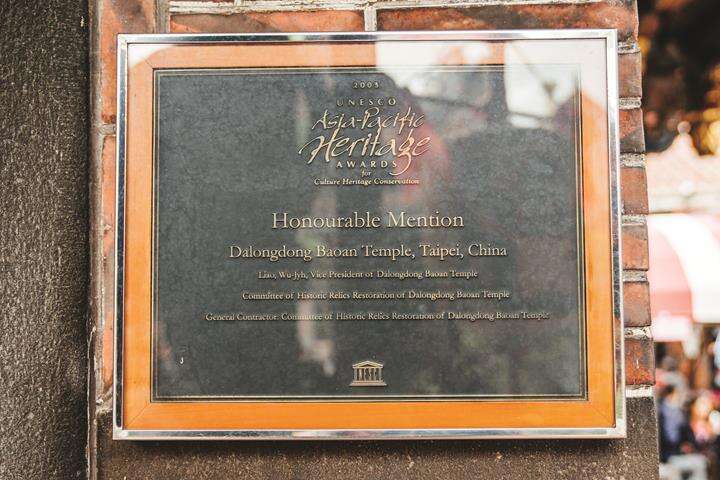 ▲Baoan Temple has won the Asia-Pacific Award for Cultural Heritage Conservation, presented by the United Nations Educational, Scientific and Cultural Organization (UNESCO).
▲Baoan Temple has won the Asia-Pacific Award for Cultural Heritage Conservation, presented by the United Nations Educational, Scientific and Cultural Organization (UNESCO).
The detailed door paintings and unusually high three-beamed entrance hall ceiling are the first details visitors may notice. The middle gate is painted with “celestial governors” Yu Chigong (尉遲恭), with a dark complexion, and Qin Shubao (秦叔寶), with lighter skin. Each door god represents prosperity, good fortune or promotion. “To make a temple this big during the Qing Dynasty (清朝, 1636 A.D. – 1912 A.D.), with five entry doors, was not easy,” Chang continues.
Although the principal shrine may look symmetrical, a 1917 renovation included work by two different artists, Chen Ying-bin (陳應彬) and Kuo Ta (郭塔). Directly under the double-eave roof is an especially masterful woodcarving by the two masters which depicts both a feast and a battle respectively. Each added inconspicuous commentary in their work, referencing their own ability or that of the other craftsman as part of their competition. “The different sides of the hall are a dialogue between the artists,” Chang notes. “One might leave his name. The other might intentionally not do so, which expresses that the artist knows his work speaks for itself.”
The main hall, typically closed to the public, also houses masterworks of Koji pottery and carvings of the 36 Celestial Officials, carved in the early 19th century by masters from Quanzhou, China. These figures serve as guards for Baosheng Dadi.
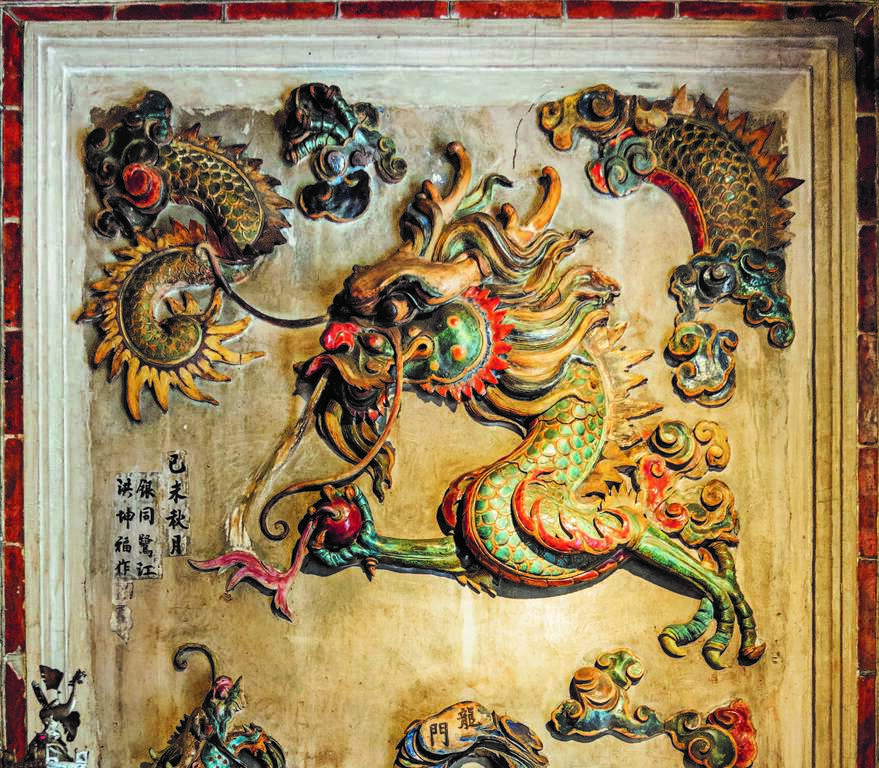
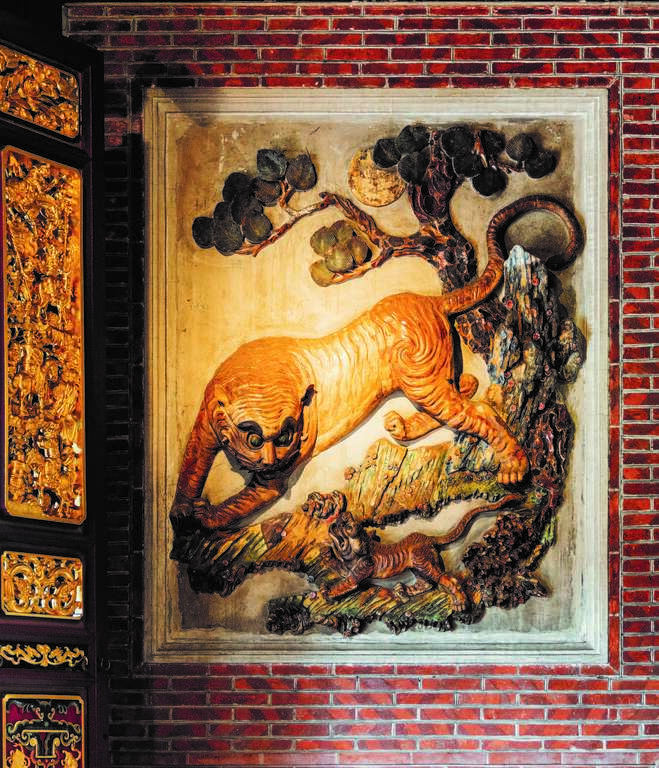 ▲On the inner walls of the main hall, the dragon and tiger Koji pottery pieces are exquisite and detailed, imbuing a magnificent sense of power and grandeur.
▲On the inner walls of the main hall, the dragon and tiger Koji pottery pieces are exquisite and detailed, imbuing a magnificent sense of power and grandeur.
The eastern and western wings of the temple hold further architectural details. Each wing is square rather than a traditional hexagonal shape. Above the western wing sits the Drum Tower built by Kuo Ta. This includes delicate phoenix joints and dragon brackets. The east wing, which houses Matsu and Tudi Gong, is topped by the Bell Tower, built by Chen Ying-bin. The beams and brackets of this tower are skillfully carved. Inside the east wing, Tudi Gong’s appearance is especially notable. “This Land God’s cap is that of an imperial advisor, which is unusual for a Tudi Gong,” Chang points out.
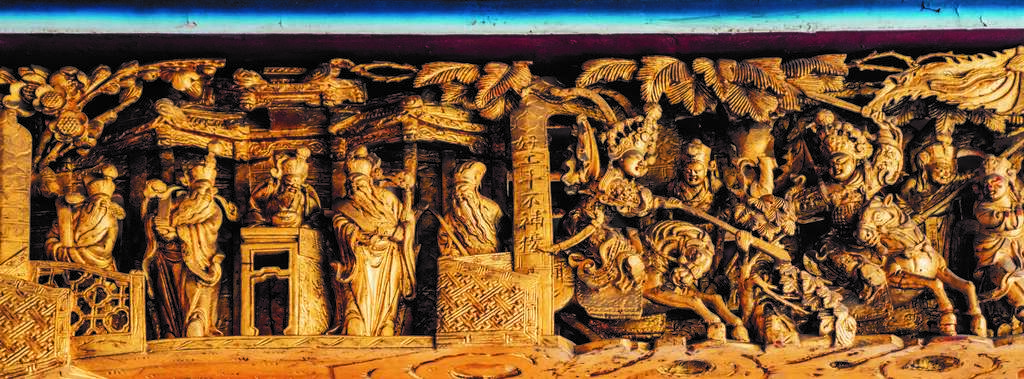 ▲One of the architectural features of Baoan Temple is that the craftsmen would leave messages on their works.
▲One of the architectural features of Baoan Temple is that the craftsmen would leave messages on their works.
Worshipping at the Temple
To pray at Baoan Temple, you must begin with the incense brazier at the front, which represents the Jade Emperor. Then proceed to the main shrine to pay respect to Baosheng Dadi. After that, visitors may pay their respects at the other shrines. “There’s no idol for the Jade Emperor, because we don’t know what he looks like,” Chang notes.
“Be sure to tell each god your name and where you live,” adds Liao. “You can tell the gods what your issue is, whether it’s children, or health, or work. You can also toss the fortune blocks onto the floor. When you get an affirmative answer, you can take a fortune stick. This will indicate a specific slip of paper with your fortune on it, which we can interpret for you.”
Issues regarding health, medicine and careers may be directed to Baosheng Dadi. Tudi Gong should be consulted in matters regarding housing, land and business, and Matsu’s domain includes smooth travels.
Praying to Zhusheng Niangniang involves special rituals. Parents hoping to conceive are likely to bring her offerings of cosmetics, flowers or embroidered shoes. “If a daughter is desired, bring a white flower and exchange it for a red one. For a son, bring a red flower and exchange it for white,” Liao instructs.
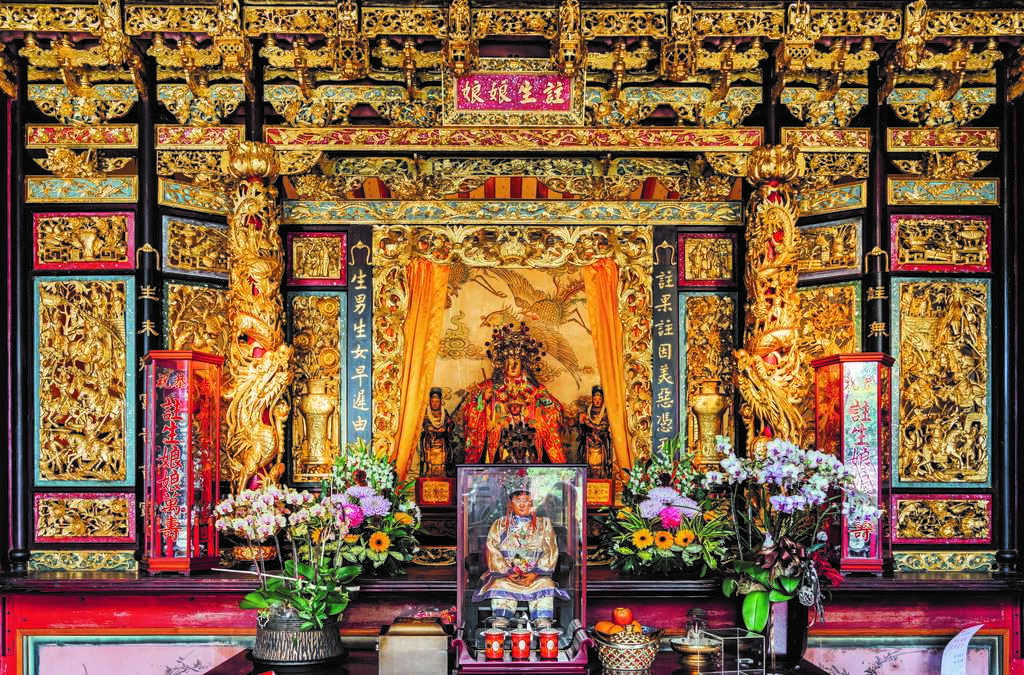
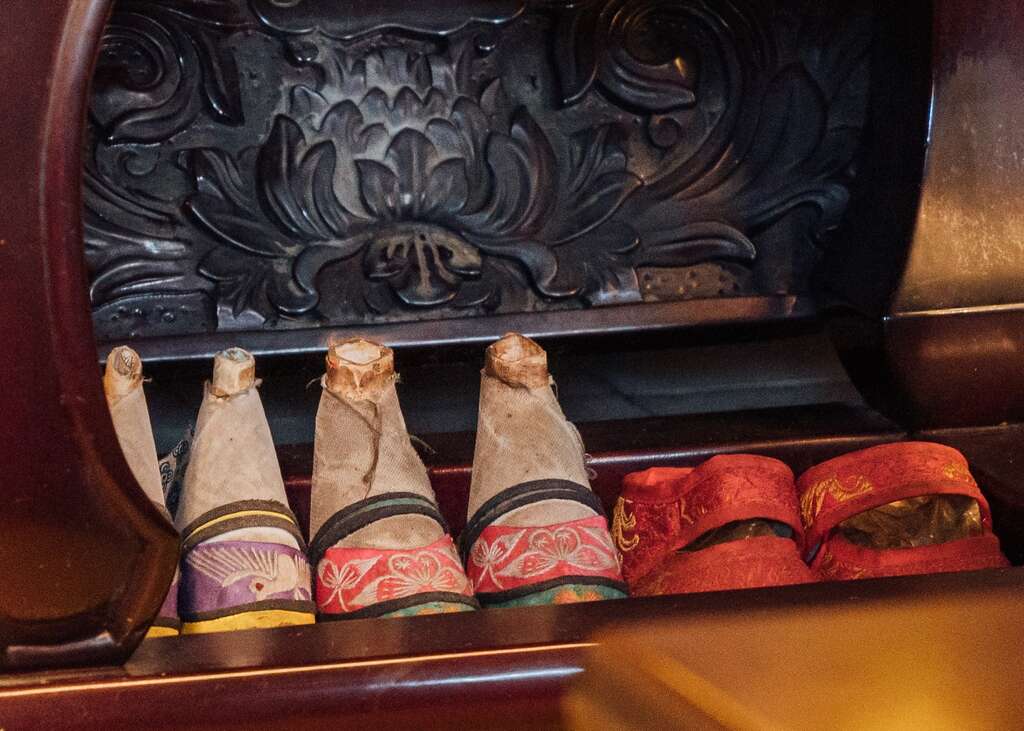 ▲Believers bought embroidered shoes for Zhusheng Niangniang to appreciate the answering of their prayers for conception.
▲Believers bought embroidered shoes for Zhusheng Niangniang to appreciate the answering of their prayers for conception.
“Foreigners are also welcome to worship at Baoan Temple,” Liao goes on. “We’re always happy to assist them if needed. We’ve had visitors from the Philippines who prayed here even though they were Catholic. In one case, after visiting Baoan Temple, a Filipino man’s wife called to say their child’s fever had broken!”
The 2023 Baosheng Cultural Festival
Every year, Baoan Temple holds the Baosheng Cultural Festival (保生文化祭) to celebrate the birthday of Baosheng Dadi. The festival usually spans several months, and includes art exhibitions, scholarship awards, lectures, opera and drama performances, free medical consultations, painting contests and other activities. In 2023, the festival will take place between April 23rd and June 19th.
“We bring in the highest-level drama troupes,” Liao says. “They’re so good that we put out about a thousand chairs for the audience, and they’re usually full. Then the troupes perform and Baosheng Dadi decides which is the best.”
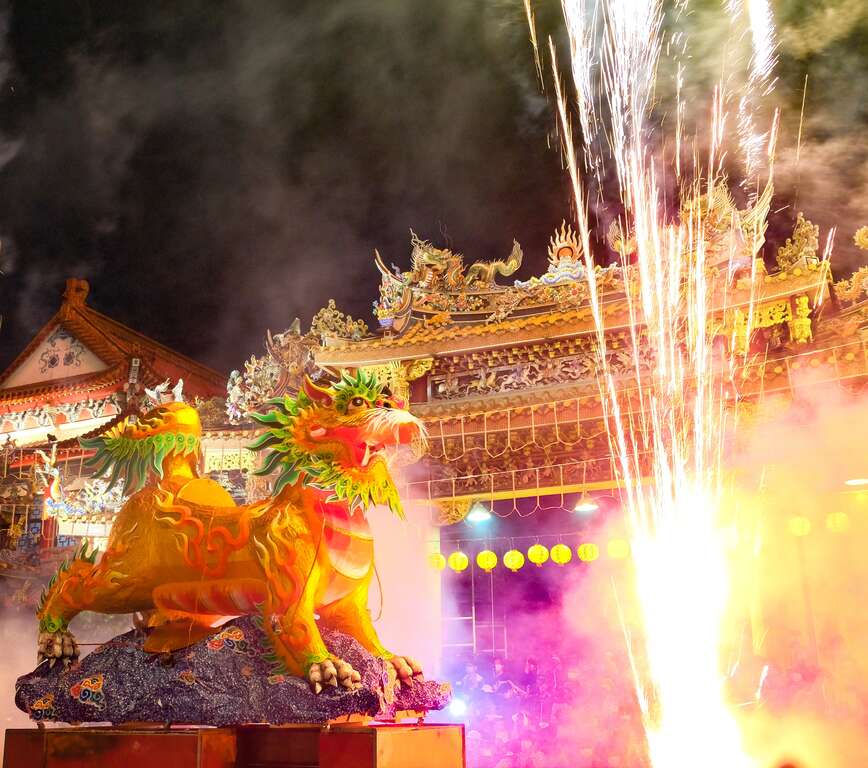 ▲One of the highlights of the Baosheng Cultural Festival is the Lion Fireworks Show, in which many fireworks are set off, creating a spectacular scene. (Photo/Dalongdong Baoan Temple)
▲One of the highlights of the Baosheng Cultural Festival is the Lion Fireworks Show, in which many fireworks are set off, creating a spectacular scene. (Photo/Dalongdong Baoan Temple)
Every three years, the festival includes a parade through Dalongdong and Dadaocheng which begins at midday and loops back to Baoan Temple in the evening. The next day, a fire-walking ritual (過火儀式) is held in the park across from the temple, to purify the idols after their journey through the neighborhood. Although the parade and fire walking will not be held in 2023, visitors may enjoy the “Fire Lion Fireworks Show (放火獅)” on May 3rd, the drama and opera performances throughout the month of April, and the art exhibition from June 3rd to 6th.
▶ 2023 Baosheng Cultural Festival
Taipei’s Historic Gems:
Dalongdong Baoan Temple and the Baosheng Cultural Festival
Author Jenna Lynn Cody
Photographer Samil Kuo, Dalongdong Baoan Temple
Taipei’s historic temples dot the city with vibrant color, serving as both cultural hubs and historic sites. Among these places of worship, one stands above the rest: Dalongdong Baoan Temple (大龍峒保安宮). With over two centuries of history, Baoan Temple is dedicated to Baosheng Dadi (保生大帝), also known as Emperor Baosheng, the venerated god of health and medicine, and is covered with ornate woodcarvings by masters from generations past, Koji pottery, couplet-inscribed columns and large murals. To better understand the story and splendor of this cultural gem, we sat down with temple president Liao Wu-jyh (廖武治), as well as Chang Ching-wei (張靖委), a researcher of cultural property who matriculated from the Graduate Institute of Architecture and Cultural Heritage at the Taipei National University of the Arts (國立台北藝術大學).
 ▲Baoan Temple, where people worship Baosheng Dadi, has stood in Dalongdong for over two centuries.
▲Baoan Temple, where people worship Baosheng Dadi, has stood in Dalongdong for over two centuries. The History of Dalongdong Baoan Temple
1742 marks the first known appearance of Baoan Temple in the Dalongdong neighborhood, founded by immigrants from Tongan (同安) in China’s Fujian Province. The site of the original temple is unknown.
Baoan Temple President Liao Wu-jyh recounts the story of the Baosheng Dadi idols in the principal shrine. “The first two were carved in China, and a race was held to see which idol would reach Dalongdong first,” he says. “A large idol [with distinctive glass eyes] was sent south and transported overland from Budai (布袋) in Chiayi County (嘉義縣), and a smaller one was brought by sea via Tamsui (淡水). The smaller idol arrived first, and the one from Chiayi became the secondary idol.”
 ▲The Baosheng Dadi idols of the grand master, second master and third master in the principal shrine.
▲The Baosheng Dadi idols of the grand master, second master and third master in the principal shrine. In 1805, a much larger Baosheng Dadi idol was carved in Taiwan and worshipped alongside the original two, around the time construction of the current Baoan Temple commenced. This structure spans almost 9,917 square meters.
“The location was decided by walking around with the idol until it indicated where it wanted its temple to be built,” says Liao.
 ▲Temple President Liao Wu-jyh has hosted various events at Baoan Temple in recent years, and even presides over ceremonies personally.
▲Temple President Liao Wu-jyh has hosted various events at Baoan Temple in recent years, and even presides over ceremonies personally. Many difficulties befell Baoan Temple in the 130 years that followed. In 1859, the temple was almost attacked from the north, a conflict attributed to warring factions with grudges that stretched back to Fujian Province, their place of origin. This was warded off by the actions of local people, who scared off the attackers with wooden poles. The structure was damaged by a munition’s explosion in 1895 during the Japanese occupation of Taipei, and was later turned into a school. In 1949, families who fled to Taiwan from China with the retreating Nationalist Army took shelter in the temple. Renovations were conducted in 1967 and again in 1995.
Gods Worshipped at Baoan Temple
Born in 979 A.D., Baosheng Dadi began his adult life as an imperial official. Soon, news spread of the medical miracles he was said to perform. In one story, he met a dragon posing as a mountain-dwelling woodcutter, suffering from an eye disease. Upon recognizing Baosheng Dadi, the woodcutter turned back into a dragon and begged for eye drops, which the god administered.
As time went on, other Confucian, Buddhist and Daoist gods were added alongside Baosheng Dadi. These include Confucius, Guanyin (觀音, the goddess of mercy and compassion), Zhusheng Niangniang (註生娘娘, the principal goddess of pregnancy and childbirth), Tudi Gong (土地公, the god of land), Shennong Dadi (神農大帝, the god of agriculture) and Matsu (媽祖, goddess of the sea). The highest god of the Daoist pantheon as well as the lord of heaven and earth, Yuhuang Dadi (玉皇大帝), or the Jade Emperor, is worshipped both at the incense brazier at the front of the temple and again on the top floor of the rear-most shrine.
In the main shrine also sits an idol to the Black Tiger General (黑虎將軍). “The tiger used to eat people,” Liao says. “One day, he devoured a woman, but one of her hair ornaments got stuck in his throat.” The tiger asked Baosheng Dadi to remove the ornament, but he refused, saying he would not help a creature who killed humans. The tiger promised to stop, and Baosheng Dadi removed the hairpin. Afterwards, the black tiger became both servant and mount of Baosheng Dadi, as well as the god’s eternal guardian in the afterlife. As a consequence, Baosheng Dadi transformed the black tiger into a deity. People worship it as Black Tiger General, paying their respects to him on the 16th of April, according to the lunar calendar.
The Art and Architecture of Baoan Temple
Temples are rarely decorated simply for aesthetic reasons. “Baoan Temple is about 280 years old, so its architecture and decorative elements hold abundant historical meaning,” says Chang Ching-wei.
 ▲Baoan Temple has won the Asia-Pacific Award for Cultural Heritage Conservation, presented by the United Nations Educational, Scientific and Cultural Organization (UNESCO).
▲Baoan Temple has won the Asia-Pacific Award for Cultural Heritage Conservation, presented by the United Nations Educational, Scientific and Cultural Organization (UNESCO). The detailed door paintings and unusually high three-beamed entrance hall ceiling are the first details visitors may notice. The middle gate is painted with “celestial governors” Yu Chigong (尉遲恭), with a dark complexion, and Qin Shubao (秦叔寶), with lighter skin. Each door god represents prosperity, good fortune or promotion. “To make a temple this big during the Qing Dynasty (清朝, 1636 A.D. – 1912 A.D.), with five entry doors, was not easy,” Chang continues.
Although the principal shrine may look symmetrical, a 1917 renovation included work by two different artists, Chen Ying-bin (陳應彬) and Kuo Ta (郭塔). Directly under the double-eave roof is an especially masterful woodcarving by the two masters which depicts both a feast and a battle respectively. Each added inconspicuous commentary in their work, referencing their own ability or that of the other craftsman as part of their competition. “The different sides of the hall are a dialogue between the artists,” Chang notes. “One might leave his name. The other might intentionally not do so, which expresses that the artist knows his work speaks for itself.”
The main hall, typically closed to the public, also houses masterworks of Koji pottery and carvings of the 36 Celestial Officials, carved in the early 19th century by masters from Quanzhou, China. These figures serve as guards for Baosheng Dadi.

 ▲On the inner walls of the main hall, the dragon and tiger Koji pottery pieces are exquisite and detailed, imbuing a magnificent sense of power and grandeur.
▲On the inner walls of the main hall, the dragon and tiger Koji pottery pieces are exquisite and detailed, imbuing a magnificent sense of power and grandeur. The eastern and western wings of the temple hold further architectural details. Each wing is square rather than a traditional hexagonal shape. Above the western wing sits the Drum Tower built by Kuo Ta. This includes delicate phoenix joints and dragon brackets. The east wing, which houses Matsu and Tudi Gong, is topped by the Bell Tower, built by Chen Ying-bin. The beams and brackets of this tower are skillfully carved. Inside the east wing, Tudi Gong’s appearance is especially notable. “This Land God’s cap is that of an imperial advisor, which is unusual for a Tudi Gong,” Chang points out.
 ▲One of the architectural features of Baoan Temple is that the craftsmen would leave messages on their works.
▲One of the architectural features of Baoan Temple is that the craftsmen would leave messages on their works. Worshipping at the Temple
To pray at Baoan Temple, you must begin with the incense brazier at the front, which represents the Jade Emperor. Then proceed to the main shrine to pay respect to Baosheng Dadi. After that, visitors may pay their respects at the other shrines. “There’s no idol for the Jade Emperor, because we don’t know what he looks like,” Chang notes.
“Be sure to tell each god your name and where you live,” adds Liao. “You can tell the gods what your issue is, whether it’s children, or health, or work. You can also toss the fortune blocks onto the floor. When you get an affirmative answer, you can take a fortune stick. This will indicate a specific slip of paper with your fortune on it, which we can interpret for you.”
Issues regarding health, medicine and careers may be directed to Baosheng Dadi. Tudi Gong should be consulted in matters regarding housing, land and business, and Matsu’s domain includes smooth travels.
Praying to Zhusheng Niangniang involves special rituals. Parents hoping to conceive are likely to bring her offerings of cosmetics, flowers or embroidered shoes. “If a daughter is desired, bring a white flower and exchange it for a red one. For a son, bring a red flower and exchange it for white,” Liao instructs.

 ▲Believers bought embroidered shoes for Zhusheng Niangniang to appreciate the answering of their prayers for conception.
▲Believers bought embroidered shoes for Zhusheng Niangniang to appreciate the answering of their prayers for conception. “Foreigners are also welcome to worship at Baoan Temple,” Liao goes on. “We’re always happy to assist them if needed. We’ve had visitors from the Philippines who prayed here even though they were Catholic. In one case, after visiting Baoan Temple, a Filipino man’s wife called to say their child’s fever had broken!”
The 2023 Baosheng Cultural Festival
Every year, Baoan Temple holds the Baosheng Cultural Festival (保生文化祭) to celebrate the birthday of Baosheng Dadi. The festival usually spans several months, and includes art exhibitions, scholarship awards, lectures, opera and drama performances, free medical consultations, painting contests and other activities. In 2023, the festival will take place between April 23rd and June 19th.
“We bring in the highest-level drama troupes,” Liao says. “They’re so good that we put out about a thousand chairs for the audience, and they’re usually full. Then the troupes perform and Baosheng Dadi decides which is the best.”
 ▲One of the highlights of the Baosheng Cultural Festival is the Lion Fireworks Show, in which many fireworks are set off, creating a spectacular scene. (Photo/Dalongdong Baoan Temple)
▲One of the highlights of the Baosheng Cultural Festival is the Lion Fireworks Show, in which many fireworks are set off, creating a spectacular scene. (Photo/Dalongdong Baoan Temple) Every three years, the festival includes a parade through Dalongdong and Dadaocheng which begins at midday and loops back to Baoan Temple in the evening. The next day, a fire-walking ritual (過火儀式) is held in the park across from the temple, to purify the idols after their journey through the neighborhood. Although the parade and fire walking will not be held in 2023, visitors may enjoy the “Fire Lion Fireworks Show (放火獅)” on May 3rd, the drama and opera performances throughout the month of April, and the art exhibition from June 3rd to 6th.
▶ 2023 Baosheng Cultural Festival
Gallery
From Snacks to Souvenirs: Four Can’t-Miss Stores on Taipei’s Historic Dihua Street (TAIPEI Quarterly 2023 Spring Vol.31)
International tourists can enjoy a discount of up to NTD 10K by staying in Taipei! TPEDOIT Launches UNDISCOVERED TAIPEI. Up to 10,000 free Taipei Sightseeing Bus tickets are being sent out, plus a limited offer to stay in a five-star hotel for as little as NTD 3600!
:::
Popular articles
 TAIPEI Quarterly 2023 Spring Vol.31
TAIPEI Quarterly 2023 Spring Vol.31 Four Keys to Better Living: Enjoying the Cozy Life in Taipei (TAIPEI Quarterly 2023 Spring Vol.31)
Four Keys to Better Living: Enjoying the Cozy Life in Taipei (TAIPEI Quarterly 2023 Spring Vol.31) Exploring Taipei’s Cool Modern Architecture (TAIPEI Quarterly 2023 Spring Vol.31)
Exploring Taipei’s Cool Modern Architecture (TAIPEI Quarterly 2023 Spring Vol.31) Finding Your Way Through Reading (TAIPEI Quarterly 2023 Spring Vol.31)
Finding Your Way Through Reading (TAIPEI Quarterly 2023 Spring Vol.31) Inclusivity Leading to Win-Win Positivity: Turning Foreign Labor Into a Talent Resource (TAIPEI Quarterly 2023 Spring Vol.31)
Inclusivity Leading to Win-Win Positivity: Turning Foreign Labor Into a Talent Resource (TAIPEI Quarterly 2023 Spring Vol.31) Historic Landmark Bakeries in Taipei (TAIPEI Quarterly 2023 Spring Vol.31)
Historic Landmark Bakeries in Taipei (TAIPEI Quarterly 2023 Spring Vol.31)
 Taipei’s Historic Gems: Dalongdong Baoan Temple and the Baosheng Cultural Festival (TAIPEI Quarterly 2023 Spring Vol.31)
Taipei’s Historic Gems: Dalongdong Baoan Temple and the Baosheng Cultural Festival (TAIPEI Quarterly 2023 Spring Vol.31)